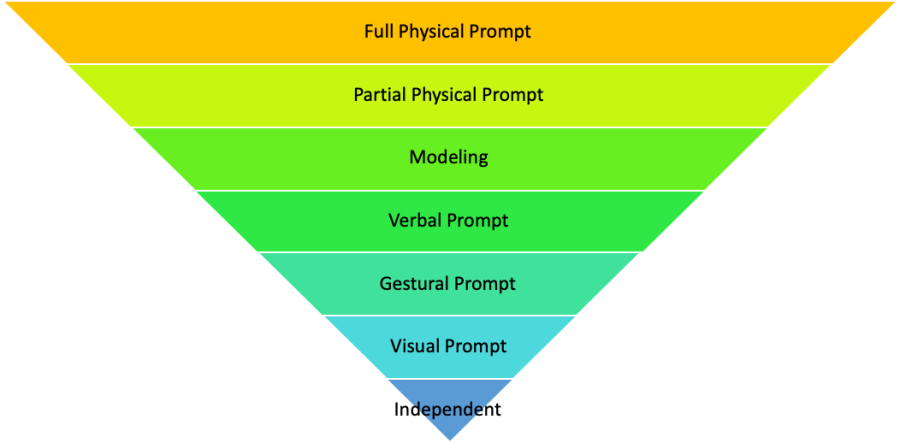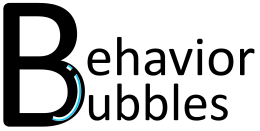Prompts are used to help a client acquire a skill more quickly. Today, let’s go through some examples of prompts. There are many types of prompts. The commonly known ones are as follows:
Full Physical Prompt (‘aka’ hand over hand prompt)
A full physical prompt is the most intrusive prompt one can utilise. This involves physically guiding the client though the whole response by manoeuvring their body parts to achieve the correct response. For example, should the client be unable to follow the instruction ‘clap hands’, the therapist would reach out, take both client’s hands fully, and prompt both hands together to produce a clap.
Partial Physical Prompt
Physically guiding the client though part of the response by manoeuvring part of their body to achieve the correct response. For example, should the client be unable to follow the instruction ‘clap hands’, the therapist would reach out and tap the back of both the client’s hands, and the client would complete the instruction (clap).
Modeling
This prompt would involve showing the client how to do the activity. Looking at the same example, should the client be unable to follow the instruction ‘clap hands’, the therapist would show the client how to clap their hands by clapping their own hands. The client would see the therapist clapping and imitate the action, thus completing the instruction ‘clap hands’.
Verbal Prompt
Verbal prompts involve providing the words for the client. For example, should you be working on imitation with the client ‘do this’ (action:clap) where the client is supposed to follow the action, saying the word ‘clap hands’ is a verbal prompt should the client know the this action command. Otherwise, another example would be providing a client a verbal prompt for answering social questions. Should the client be asked ‘what color is the sky?’, the therapist can verbally prompt the client ‘blue’ for the client to repeat the answer, thus using a verbal prompt successfully.
Gestural Prompt
This prompt involves NOT touching the client but utilising a gestural such as pointing, looking, nodding at something as a prompt for the client. For example, should the client be unable to follow the instruction ‘touch nose’, the therapist could point at the client’s nose as a prompt for the client to touch their nose.
Visual Prompt
A visual prompt is one of the least intrusive prompts you can utilise. It is also one of the easiest to fade. This prompt involves using visuals (i.e. pictures, words, etc.) to guide a client. For example, when the client is asked ‘what is your name?’, the therapist can visually prompt the client by showing a picture with the name of the client written on it for the child to read. Otherwise, this also helps with task analysis where different pictures detailing each step for the therapist to point to can be used as a prompt to finish a complex activity.
_________________________________________________________________
Please note that this list is not extensive. It is important to know the types of prompts out there and to know what the prompt hierarchy is. Knowing the hierarchy helps to fade the prompt utilised from a more intrusive one, to a less intrusive prompt, allowing the client to achieve independence faster instead of being reliant on the prompts used. The prompt used would should be dependent on skill level of the client, and the task being taught.
I have attached a small diagram detailing the prompt hierarchy from most intrusive to least intrusive for those interested! Feel free to comment below if you have any questions on any topics!




One thought on “Prompts”